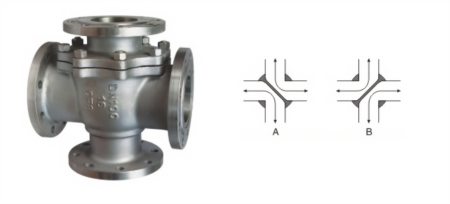
You use a 4 way ball valve when you need exact flow control in tricky pipe systems. This kind of ball valve lets you move liquids or gases through four paths. It is more useful than a butterfly valve. You can often use one instead of many two-way valves. This makes the system less complicated. The main jobs are to switch flow directions and mix streams. The table below shows how this valve helps industrial systems work better:
| Feature | Impact on Efficiency |
|---|---|
| Precise flow control | Makes sure fluids go where they should, so the system works better. |
| Reduction of multiple valves | Makes things simpler and lowers the chance of problems, so it works more reliably. |
| Simultaneous operations | Lets workers use resources and time better in factories. |
| Optimized flow characteristics | Cuts down on rough flow, so energy costs less and flow is faster. |
| Long-term reliability | Keeps working well for a long time, so it stays efficient. |
Key Takeaways
- A 4 way ball valve moves flow in four directions. It makes piping systems easier to use.
- A 4 way ball valve means you need fewer valves. This saves space and helps stop leaks.
- Pick l-port or t-port designs for your needs. Use l-port to switch flows. Use t-port to mix flows.
- Check for leaks and add lubricant often. This keeps the valve working well.
- Pick strong materials like stainless steel or PTFE. These last long and handle high heat.
- 4 way ball valves help work go faster in factories. They let you do more than one thing at once.
- These valves work in many places, like HVAC and water cleaning.
- Install the valve the right way and check it often. This helps it last longer and work better.
4 way ball valve overview
Definition
A 4 way ball valve helps you control the direction of liquids or gases in a pipeline. You can think of it as a traffic controller for fluids. This valve uses a rotating ball with a hole through it. When you turn the handle, the ball lines up with different ports, letting you send flow in different directions. Most 4 way ball valves have four ports, which means you can connect four pipes. You often see these valves in places like oil refineries, chemical plants, and water treatment systems.
Tip: You can find 4 way ball valves made from strong materials like stainless steel. These valves often meet strict standards for cleanliness and safety. Some even use PTFE seats, which handle high temperatures and make cleaning easy.
- A 4 way ball valve controls fluid flow using a rotating ball with a bore.
- It has four ports, so you can divert flow in many directions.
- You usually operate it with a lever or an actuator.
- You often see it in industries that need reliable flow control.
Main parts
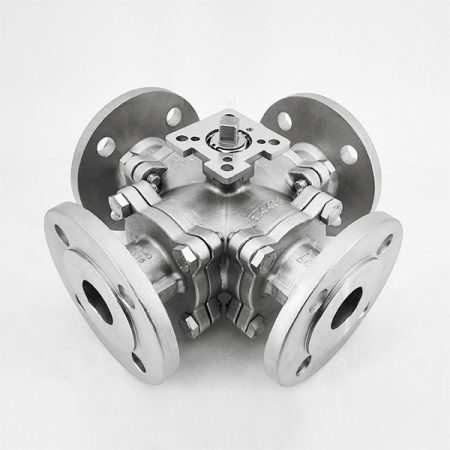
Ball
The ball sits inside the valve body. It has a hole drilled through it. When you turn the handle, the ball rotates. This movement lines up the hole with different ports. The ball can have different shapes inside, like an l-port or a t-port. An l-port ball has a hole shaped like the letter “L.” This lets you connect two of the four ports at a time. A t-port ball has a hole shaped like a “T.” This shape lets you connect three ports at once or switch between different flow paths. You choose between l-port and t-port based on how you want to control the flow.
Ports
The ports are the openings where you connect pipes. A 4 way ball valve always has four ports. Each port can act as an inlet or an outlet. The way the ball lines up with the ports decides how the fluid moves. With an l-port, you can switch flow between two different paths. With a t-port, you can mix flows or send fluid to more than one place at the same time. The ports make the valve very flexible for many uses.
| Component | Function |
|---|---|
| Casing | Holds the ball and keeps the valve strong. |
| Internal Component | The ball (with l-port or t-port) rotates to control flow. |
| Ports | Four openings for pipes, allowing many flow setups. |
| Actuator | Lets you turn the ball by hand or with a machine. |
Key features
A 4 way ball valve gives you many options for flow control. You can use an l-port to switch between two different pipes. You can use a t-port to mix flows or send fluid to more than one place. This makes the valve very useful in complex systems. You can also use it in high-pressure situations because it is strong and reliable. The valve works well with hot or cold fluids, especially if it uses PTFE seats. You can clean and maintain it easily, which saves you time.
| Feature | 4-Way Ball Valve | Other Multi-Port Valves |
|---|---|---|
| Port Configuration | Four ports (two inlets, two outlets) | Varies (e.g., three ports for 3-way) |
| Operational Flexibility | Can divert flow in two directions | Limited to specific flow directions |
| Pressure Suitability | Designed for high-pressure applications | Generally lower pressure capabilities |
| Complexity | More complex design | Simpler design (e.g., 3-way valves) |
| Maintenance Requirements | Needs more checks and cleaning | Usually less maintenance needed |
You can pick between l-port and t-port designs to match your needs. If you want to switch flow between two lines, use an l-port. If you want to mix or split flows, use a t-port. Some valves even let you change the ball inside, so you can switch from l-port to t-port if your system changes.
Note: The material you choose for your valve matters. Stainless steel and PTFE last longer and handle higher temperatures and pressures. PVC works for lower temperatures but does not last as long.
| Material Type | Durability | Temperature Resistance | Pressure Resistance | Lifespan Impact |
|---|---|---|---|---|
| Metals | High | High | High | Longer |
| PVC | Moderate | Up to 140°F | Low | Shorter |
| PTFE | High | High | High | Longer |
| Elastomers | Variable | Variable | Variable | Depends on use |
You can see that a 4 way ball valve gives you more control than a simple 3-way valve. You can use l-port and t-port designs to handle many flow patterns. This makes your system more flexible and efficient.
How it works
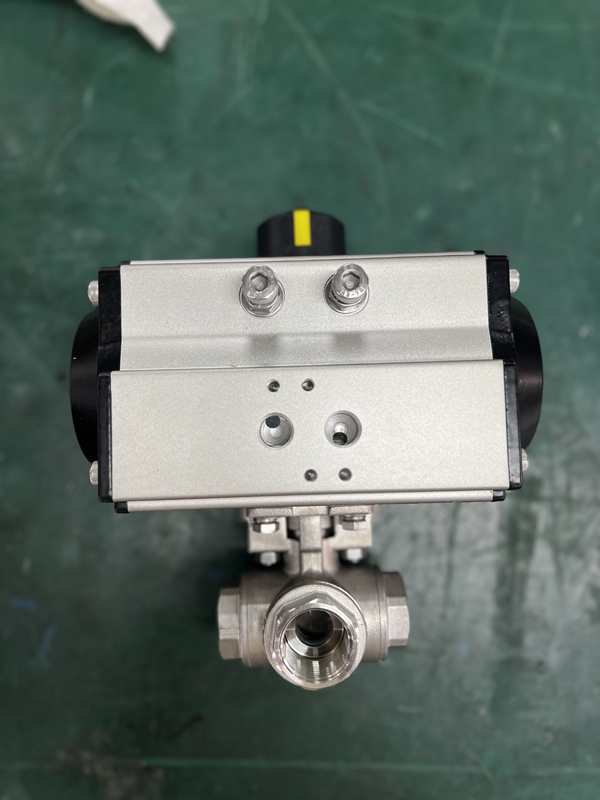
Ball rotation
You control a 4 way ball valve by turning its handle. This action rotates the ball inside the valve. The ball has a special bore, or hole, that matches either an l-port or a t-port shape. When you turn the handle, the ball lines up its bore with different ports. This movement lets you choose which pipes connect and which stay closed. The shape of the bore decides how the flow moves. An l-port bore lets you switch flow between two outlets. A t-port bore can mix flows or send fluid to more than one place at once.
Here is a table that shows how the ball rotation mechanism works:
| Mechanism | Description |
|---|---|
| Ball Rotation | The ball rotates to connect different combinations of its 4 ports. |
| Bore Shape | The shape of the ball’s bore determines the flow path and distribution. |
| Flow Configuration | An ‘X’ bore allows flow to split between two pairs of ports simultaneously. |
You can see that the l-port and t-port designs give you different ways to control the flow. The l-port is best for switching between two lines. The t-port is better for mixing or splitting flows. You get more options with a 4 way ball valve than with a simple 3-way valve.
Flow paths
The flow paths inside a 4 way ball valve depend on the ball’s bore and how you rotate it. When you use an l-port, you can divert flow between two outlets. This setup works well if you want to switch flow from one line to another. The t-port lets you connect three ports at once. You can use it to mix two flows or send one flow to two places.
Four-way ball valves have more complex porting than three-way valves. The design often comes from a five-way valve with one port blocked. This setup creates two right-angle flow paths in the same plane. When you turn the handle, you can send two different flows to two different places at the same time. This feature helps you manage complex systems with fewer valves.
Here is a table that shows the main flow path types:
| Flow Path Type | Description |
|---|---|
| X-port | Allows for reverse flow switching |
| L-pattern | Diverts flow between two outlets |
| Double L | Connects or isolates circuits |
You can use the l-port to switch flow between two outlets. The t-port lets you mix or split flows. Some valves even have an X-port for reverse flow. You get to choose the best flow path for your system.
Tip: If you need to change your system later, you can often swap the ball inside the valve. This way, you can switch from an l-port to a t-port without replacing the whole valve.
Sealing
A good seal keeps your system safe and leak-free. In a 4 way ball valve, the sealing system uses smart engineering to stop leaks, even under high pressure. The Double Piston Effect (DPE) is a common method. This system uses both the upstream and downstream pressures to push the valve seat against the ball. The pressure from both sides creates a tight seal. You do not need extra springs because the pressure does the work. This design keeps your valve leak-proof, even when the pressure gets high.
- The Double Piston Effect uses both upstream and downstream pressures to create a strong seal.
- Downstream pressure pushes the seat against the ball.
- Upstream pressure also pushes the seat toward the ball, making the seal even tighter.
- This self-pressurizing feature removes the need for springs and keeps the valve leak-proof.
You also need to pick the right sealing material. Here is a table that shows common sealing materials and their temperature ranges:
| Material Type | Description | Typical valve temperature range* |
|---|---|---|
| PTFE (Polytetrafluoroethylene) | Soft textured, used as seat and packing material, often combined with carbon for stability | -200°C up to 260°C |
| PEEK (Polyether Ether Ketone) | Strong plastic quality, mainly used as seat material, often combined with PTFE for enhanced elasticity | -60°C up to 260°C |
| HNBR (Hydrogenated Nitrile Butadiene Rubber) | Common O-ring material, suitable for low temperature | -55°C up to 150°C |
| FKM (Fluorine Kautschuk Material) | Used as O-ring material, excellent chemical properties | -50°C up to 232°C |
| FFKM (Perfluoroelastomeric Compound) | Premium O-ring material with high temperature resistance | -15°C up to 325°C |
| Graphite | Common packing material, temperature insensitive, fire-safe | -200°C up to 538°C |
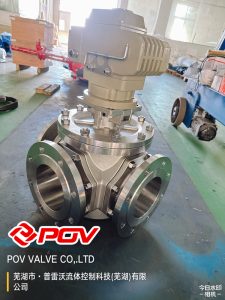
PTFE is a popular choice for both l-port and t-port valves. It handles a wide range of temperatures and resists chemicals. PEEK is strong and works well with PTFE for extra flexibility. If you need a valve for very high temperatures, graphite is a good option. You can trust these materials to keep your 4 way ball valve working safely and efficiently.
Flow control options
Switching directions
You can use a 4 way ball valve to switch the direction of flow in your piping system. This valve has four ports, so you can connect several pipes at once. When you turn the handle, the ball inside rotates. This movement lines up the internal passages with different ports. You can send liquid or gas from one pipe to another without stopping the system. The l-port design makes this process easy. It lets you choose which two ports connect at any time. You can quickly change the flow path if you need to move fluids to a different part of your system.
Here is a table that shows how the 4 way ball valve helps you control flow direction:
| Feature | Description |
|---|---|
| Ports | Four ports let you create many flow paths. |
| Installation | Flanged design makes setup simple and gives a strong seal. |
| Application | Works well in high-pressure systems for changing flow direction. |
You can see that the l-port is perfect for switching between two outlets. You do not need to use extra valves or complex piping. This makes your flow control system much easier to manage.
Tip: The internal ball or disk moves smoothly, so you can adjust the flow path with little effort.
Mixing and diverting
A 4 way ball valve also helps you with mixing fluids or diverting them to different places. The t-port design is best for this job. When you use a t-port, you can connect three ports at once. This setup lets you mix two different fluids before sending them out through another pipe. You can also split one flow into two separate paths. This feature is useful in chemical plants or water treatment systems where you need to blend or separate streams.
- The t-port allows you to:
- Mix two incoming flows into one outlet.
- Split one inlet into two outlets.
- Divert flow to different parts of your system.
The l-port can also help with diverting, but it cannot mix fluids as well as the t-port. You should choose the right port type based on your flow control needs.
Replacing multiple valves
You can make your piping system simpler by using a 4 way ball valve instead of several two-way valves. This valve combines many functions into one device. You do not need to install and maintain several valves for each flow path. The l-port and t-port designs give you all the options you need for switching, mixing, or diverting flows. This setup saves space and reduces the chance of leaks or failures.
A 4 way ball valve makes your flow control system more efficient. You spend less time on installation and maintenance. You also lower the risk of mistakes because you have fewer parts to manage. In many industrial setups, this valve replaces a group of two-way valves, making the whole process smoother and more reliable.
Applications
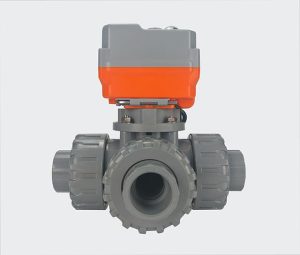
Industrial uses
You see 4 way ball valves in lots of industries. These valves help control tricky piping systems. They let you move liquids or gases where you want. Here are some ways you might use a 4 way ball valve at work:
- Move water through a pipeline.
- Open or close gate valves for different areas.
- Control exhaust gases to keep air clean.
- Check flow rates and pressure for better monitoring.
- Change water temperature in heating or cooling systems.
- Do maintenance without shutting everything down.
These valves make your job easier. You can change flow paths, mix fluids, or block off parts of your system. This helps your plant work well. You save time on maintenance since you do not need to take out many valves.
Tip: Using a 4 way ball valve means you need fewer valves. This makes your system simpler and more dependable.
HVAC
Heating, ventilation, and air conditioning (HVAC) systems need good flow control. A 4 way ball valve helps you manage fluid direction and mixing. This keeps the temperature right in each part of a building. The table below shows how these valves help HVAC systems:
| Feature | Description |
|---|---|
| Flow Control | 4 way ball valves control flow direction and mixing, which helps with temperature control. |
| Energy Efficiency | They help save energy by making fluid flow better. |
| Application | Used in systems that need exact control of many inputs and outputs. |
These valves help you save energy. You get better control over heating and cooling. You can handle many sources and outputs with one valve. This makes your HVAC system work better and is easier to fix.
Note: With a 4 way ball valve in HVAC, you can quickly switch between heating and cooling. This keeps your building comfy all year.
Water treatment
4 way ball valves are important in water treatment. These valves help you control water flow in tough piping systems. You can send water to different places or mix fluids when needed. This makes it easier to move water where it is needed most.
You often see these valves in:
- Water utilities to send water to different treatment steps
- Chemical plants to mix or separate fluids
- Farm irrigation systems to send water to different fields
A 4 way ball valve lets you control water flow in many ways. You can keep your system working well and react fast to changes. This helps you give clean water and keep things running smoothly.
Tip: Pick the right valve material, like stainless steel or PTFE, so your valve lasts longer in water treatment.
Advantages
Efficiency
You want your system to work well and not waste energy. A 4 way ball valve helps you do this. This valve lets you control liquid or gas flow with one handle turn. You can change flow paths fast. This saves time and helps stop mistakes.
In HVAC, a 4 way ball valve lets you switch between heating and cooling. This keeps the temperature steady and saves energy. In hydraulic systems, you can control fluid direction very well. This helps machines work better and last longer. These valves are also used in advanced HVAC systems. They help control refrigerant flow. This keeps people comfortable and uses less energy.
Here is a table that shows how 4 way ball valves help different systems:
| Application Area | Benefit of Four-Way Ball Valves |
|---|---|
| HVAC Systems | Enables efficient climate control by allowing seamless transitions between heating and cooling. |
| Hydraulic Systems | Provides precise control over fluid direction for smooth machinery operation. |
| Advanced HVAC | Manages refrigerant flow to reduce energy use and keep comfort levels high. |
Tip: Using a 4 way ball valve can help your system use less energy and work better.
Versatility
A 4 way ball valve gives you lots of ways to control flow. You can use it in many jobs and industries. In hydraulic systems, you move cylinders or pistons. In HVAC, you control hot or cold fluid flow. Water utilities use these valves to send water through pipes. Chemical plants use them to handle different fluids safely. Farmers use them to send water to different fields.
- You can move hydraulic cylinders or pistons.
- You can control heating or cooling in HVAC.
- You can send water through utility pipes.
- You can handle fluids in chemical plants.
- You can send water to fields in irrigation.
One valve can do many things. This makes your system more flexible. You do not need to buy a different valve for each job.
Space saving
You sometimes have to fit many pipes and valves in a small space. A 4 way ball valve helps you save room. You can use one four-way valve instead of many two-way valves. This means you need fewer fittings and connections. Your setup looks cleaner and is easier to manage.
Using fewer valves also means fewer leaks. You spend less time putting things together and fixing them. You can reach other parts of your system more easily. This makes your work faster and safer.
Using a 4 way ball valve gives you more control and less mess. Your system looks neater and works better, too.
Four way ball valve vs other multi-port valves
3 way vs 4 way
When you look at multiport ball valves, you often see two main types: the 3-way ball valve and the 4 way ball valve. Both help you control flow, but they work in different ways. You use a 3-way ball valve when you want to connect three pipes. This valve lets you switch flow between two outlets or mix two flows into one. The 3-way ball valve comes in two main designs: L-port and T-port. The L-port lets you divert flow from one inlet to either of two outlets. The T-port can mix flows or split one flow into two outlets.
A 4 way ball valve gives you even more options. You can connect four pipes. This valve lets you switch, mix, or divert flows in more complex systems. You can use it to send two different flows to two different places at the same time. The 3-way ball valve cannot do this. If you need to control more than three flow paths, you should pick a 4 way ball valve.
Here is a table to help you compare:
| Feature | 3-Way Ball Valve | 4 Way Ball Valve |
|---|---|---|
| Number of Ports | 3 | 4 |
| Flow Paths | Switch or mix | Switch, mix, or split |
| Common Port Types | L-port, T-port | L-port, T-port, X-port |
| System Complexity | Simple | More complex |
| Typical Use | Divert or mix flows | Advanced flow control |
Tip: If your system needs to handle more than three pipes or you want to reduce the number of valves, a 4 way ball valve is the better choice.
Unique benefits
Y型球閥-01-1-300x300.jpg)
You get special advantages when you use a 4 way ball valve instead of other multiport ball valves. First, you can replace several 3-way ball valves with just one 4 way ball valve. This makes your system simpler and easier to manage. You save space and lower the risk of leaks. You also spend less time on installation and maintenance.
A 4 way ball valve gives you more control over flow direction. You can switch, mix, or split flows without adding extra valves. This helps you in systems where you need to change flow paths often. You also get better sealing and less chance of cross-contamination. Many 4 way ball valves use advanced sealing materials, so they work well in high-pressure and high-temperature systems.
Here are some unique benefits you get:
- You can control four flow paths with one valve.
- You can switch between different flow patterns quickly.
- You can reduce the number of connections and fittings.
- You can use the valve in tough conditions, like high pressure or temperature.
- You can make your system safer and more reliable.
Using a 4 way ball valve means you do not need to use as many 3-way ball valves or other multiport ball valves. This makes your piping system easier to use and maintain.
If you want a flexible and powerful solution for flow control, you should consider a 4 way ball valve. It gives you more options than a three-way ball valve or other multiport ball valves. You can handle complex flow patterns with less effort.
Selection and maintenance
Choosing the right valve
You want your 4 way ball valve to last and work well. Picking the right one is important for your system. Here are some things you should think about:
- Material: Pick a valve made from a material that can handle your fluid. Stainless steel is good for fluids that can cause rust. Brass works for fluids that do not cause rust.
- Size: Make sure the valve size matches your pipes. The ports need to fit your system.
- Pressure and temperature: Look at the valve’s ratings. Be sure they match your system’s needs.
- Flow rate: Choose a valve that can move the amount of fluid you need. This helps your system work smoothly.
- Actuation method: Decide if you want to turn the valve by hand or use an electric actuator for more control.
Tip: Always read the manufacturer’s data sheet before buying. This helps you pick the right valve and keeps your system safe.
Installation tips
You can make installation easier if you plan ahead. First, check that the valve fits your system’s size and pressure. Clean the pipes before you put in the valve. This keeps dirt out. Line up the valve ports with your pipes. Tighten the bolts evenly to get a good seal. If you use an actuator, test it before you finish. Make sure the valve moves without sticking.
- Use the right tools when you tighten bolts.
- Do not force the valve handle. If it is hard to turn, check if it lines up right.
- Test the valve with water or air before using chemicals or hot fluids.
Note: Careful installation helps stop leaks and makes maintenance easier later.
Maintenance
You keep your 4 way ball valve working by checking it often. Look for leaks, strange sounds, or if it is hard to turn. If you find a problem, fix it fast. Here are some common problems and how to solve them:
| Maintenance Issue | Possible Causes | Solutions |
|---|---|---|
| Valve won’t shut off completely | Dirt inside, worn seats, ball damage, not lined up right | Turn off flow, move valve, clean parts, replace if broken |
| Difficult operation | Needs oil, rust, heat changes | Move valve, add oil, clean parts, fix if very bad |
| Stem leakage | Worn seals, loose packing, stem damage | Tighten packing, change seals, check for damage, make sure it is put together right |
| Body leakage | Loose bolts, bad seal, cracked body | Tighten bolts, change seals, replace valve if cracked, check how it is used |
| Inconsistent flow control | Blocked, broken parts, wrong size | Clean parts, change broken pieces, check size, check pressure |
| Unusual noises | Bubbles, loose parts, rough flow | Check pressure, tighten bolts, check install, change worn parts |
You can stop most problems by cleaning and moving the valve often. Oil moving parts if needed. Change seals or seats when they wear out. If you hear odd sounds or see leaks, fix them fast. This keeps your system safe and working well.
Regular checks and simple fixes help your 4 way ball valve last longer and work better.
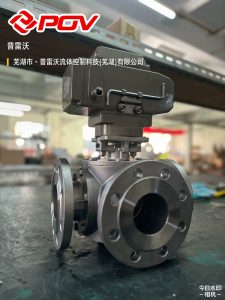
You can make your piping system simpler and more efficient with a 4 way ball valve. This valve lets you direct flow, mix streams, or select inputs, which helps you control fluids with fewer parts. A 4 way ball valve streamlines your design and works well in many jobs. When you choose a 4 way ball valve, remember these tips:
- Check the pressure and temperature ratings.
- Pick materials that match your fluid.
- Match the valve to your flow control needs.
- Make sure the size fits your pipes.
- Decide if you need automation.
- Choose a valve that is easy to maintain.
A 4 way ball valve gives you flexible, reliable flow control for modern piping solutions.
FAQ
What is the main use of a 4 way ball valve?
You use a 4 way ball valve to control the direction of flow in a piping system. This valve lets you switch, mix, or split fluids between four different pipes. It helps you manage complex flow paths with one device.
How do you know if you need an L-port or T-port design?
You pick an L-port if you want to switch flow between two lines. You choose a T-port if you need to mix or split flows. Check your system’s needs before you decide.
Can you install a 4 way ball valve by yourself?
You can install a 4 way ball valve if you follow the instructions. Make sure you match the valve size to your pipes. Tighten bolts evenly and test for leaks before using the system.
What should you do if the valve leaks?
First, check if the bolts are tight. If the leak continues, inspect the seals and seats. Replace any worn parts. Always turn off the system before you start repairs.
How often should you maintain a 4 way ball valve?
You should check your valve every few months. Look for leaks, listen for odd sounds, and make sure the handle turns smoothly. Clean and lubricate moving parts as needed.
Can a 4 way ball valve handle hot or corrosive fluids?
Yes, if you choose the right materials. Stainless steel and PTFE work well for hot or harsh fluids. Always check the valve’s temperature and chemical ratings before use.
What are the signs that a 4 way ball valve needs replacement?
You may notice leaks that do not stop, a handle that will not turn, or damaged parts. If cleaning and repairs do not fix the problem, you should replace the valve.
Tip: Always read the manufacturer’s guide for best results and safety.
